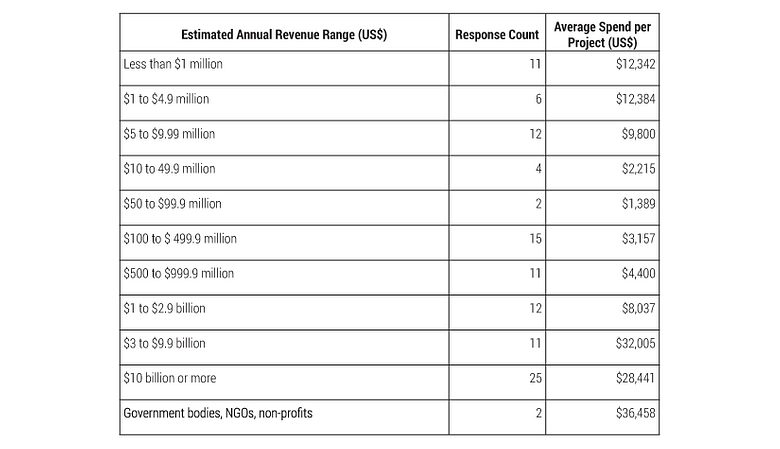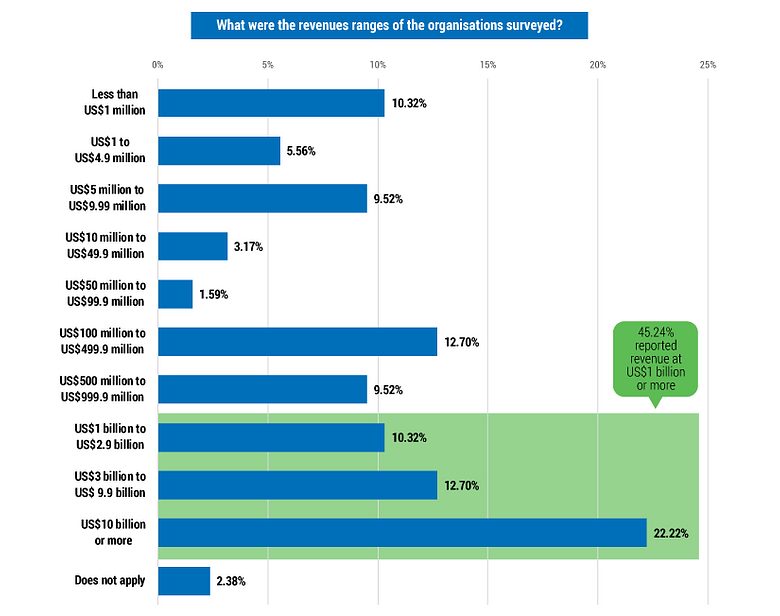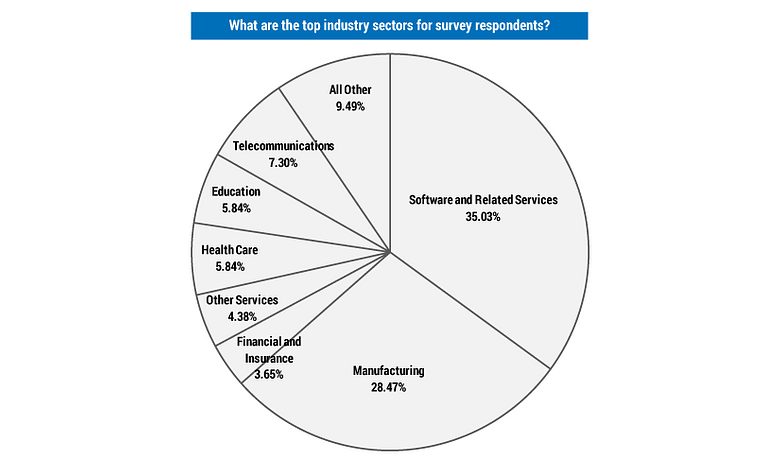
Make sure you’re measuring your customers' translation performance
What do you do to measure your customers' translation performance? Unless you are measuring results, you can’t possibly tell if you are succeeding or failing with your service.
But, a simple calculation isn’t going to cut it – businesses that buy localization and translation services assess their own performance, but, they need to know what to measure and how to interpret the results, and this is where you can offer value-added services.
Translation performance should reflect in your growth strategy and the performance of the translation is actually how well the translations grow your business abroad.
Translation Performance – Industry Vertical and Company Size Can Influence Spending
In the CSA’s survey, bigger firms dominated, with almost half of respondents reporting an estimated annual revenue of over $1 billion.

But, does the size of a company in terms of its revenue affect its translation spending? It would appear to be the case.

Since revenue can affect how much buyers spend on translation services, we need to know which performance metrics to put in place that will show ROI and encourage companies to continue to allocate budget to localization and translation.
Translation Performance Metrics
Metrics data can be evaluated from three key perspectives:
- organizational factors;
- the external environment;
- project characteristics.
The CSA’s review of the metrics included revenue range and industry sector, as well as how job title, the scope of responsibility, and team size correlate to the content type, volumes, and spending. They also analysed how content type, number of languages, volumes, turnaround times, and number of projects are interconnected and how these factors impose boundaries that affect an organization’s spending.
The research confirmed that there are two external factors that have a major impact on the performance of localization and translation teams: industry vertical and revenue range. Here’s what the survey found:
- Big companies spend the most money
Compared to estimated annual revenue range, the average spend per project is comparable for most companies, until they reach the $3 billion mark. The research showed that companies at the higher end of the spectrum tend to spend the most on translation services, as well as spending more per project. Therefore, translation performance can be measured by the average spend.
- Almost everyone is spending more
Most businesses have reported an increase in their spend on localization and translation services. An important translation performance metric is how well a company is doing across the globe.
- Healthcare, finance and insurance, and manufacturing are soaring
This “other” category, including sectors such as arts and entertainment, food and accommodation, and storage and transportation, show the largest increase in their average spending for language services. Between 2010 and 2011, financial services and insurance, healthcare, and manufacturing all grew by over 25%.

Translation Performance Indicators
The key translation performance indicators include:
- Quality – this means providing fluent translations that properly convey the same meaning as the customer’s input documents.
- Effort – you can measure the amount of effort required. By minimizing effort, you can increase productivity and speed.
- Speed – this is the overall efficiency of the translation process.
Translation Performance and Helping Customers Measure Performance
Here’s how you can help your customers measure translation performance:
- Help them figure out the right metrics to get the right results – help customers consider how their metrics will reflect the experience of their customers.
- Leverage business intelligence to drive translation dashboards – if your clients like the luxury of a business development function, ensure the translation manager reaches out and works with both teams so they can determine what to measure and why.
Buyers of language services restrict their view of metrics to the number of languages, projects, works, and so on. This is helpful for benchmarking, but limiting metrics can be short-sighted, limiting the localization manager’s ability to innovate in terms of scalability. The key is to work with client’s individual requirements to devise unique metrics for translation performance.
Subscribe for more
Stay up to date with the latest articles, news and translation insights


